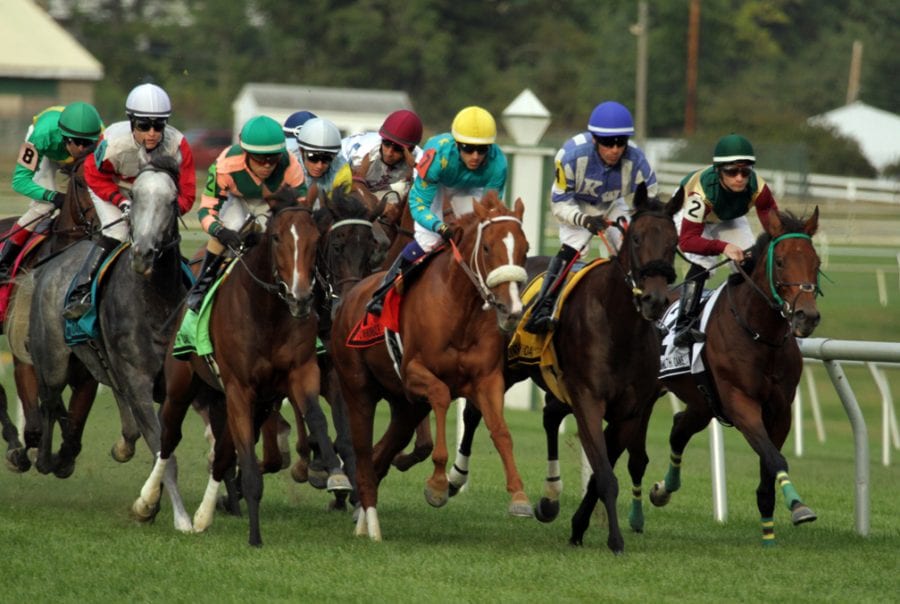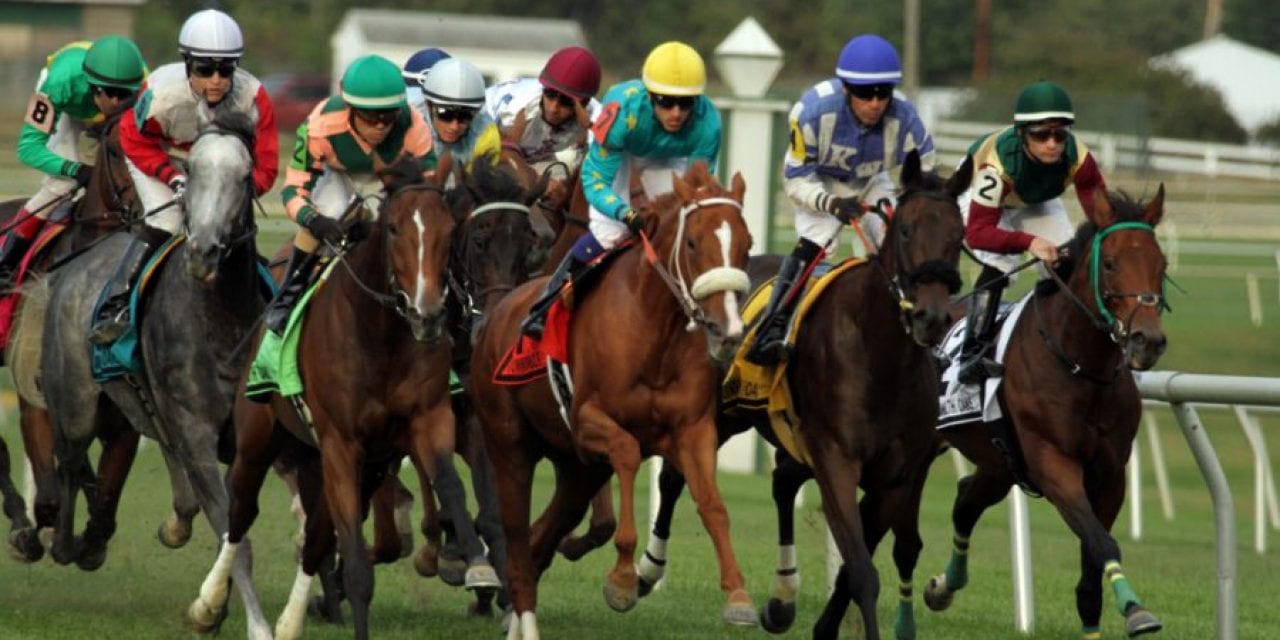
Cavalary charge. Photo by Laurie Asseo.
by Teresa Genaro
Last November, Ross Peddicord came to New York’s Equus Film Festival as an ambassador for Maryland horse racing. He expected the festival, which was being held for the second consecutive year in Manhattan, to serve as a platform for showcasing Maryland’s myriad equine activities. He didn’t expect to leave the festival wanting to bring a little piece of it home to Maryland.
The executive director of the Maryland Horse Industry Board, Peddicord headed north for two reasons: to support Racing the Times, an entry in the festival to whose funding the Board had contributed, and to sit on a panel about the state of the racing industry called “The Right Side of the Track: The Positive Side of Horse Racing.”
“We thought we should support the film, so we became a sponsor of the festival,” Peddicord said recently by phone from his office in Annapolis. “It was an amazing event. We saw 12 films, and I’ve been in touch with [festival founder] Lisa Diersen ever since.”
Peddicord was so impressed that he wants to bring a version of the festival to Maryland as part of the Board’s year-round efforts to create connections between the people of the state and its horses.
On a chilly winter day, Peddicord was thinking spring, talking to local venues like Goucher College in Towson and St. Timothy’s School in Stevenson, both of which have well-established riding programs, about the possibility of their hosting a mini-festival that would feature the award winners from the New York festival.
“We’d love to do it in March,” he said, “when people are starting to think about riding in the springtime.”
Peddicord pointed to the interest in Racing the Times, which traced Maryland’s Thoroughbred racing and breeding industries from colonial times to the present, and to the recent production of a film called Christmas Ranch in Maryland. Directed by Douglas Maddox, the feature film tells the story of a young girl sent to live on her grandmother’s ranch and who bonds with the pony who lives there. Peddicord hopes that the movie will be part of the 2016 Equus Film Festival, slated for November 17-20 in New York City.
Though thinking relatively modestly for now, Peddicord, who is himself a rider, envisions a Mid-Atlantic racing arts festival, perhaps held at the fairgrounds in Timonium, that would feature film, literature, photography, visual arts, and music.
“Art is a great way to reach mainstream folks,” he said.
At the time in the throes of planning for the annual Maryland Horse Expo (scheduled for this past weekend, it was cancelled on Saturday and Sunday because of the storm), Peddicord also sees a potential intersection for an arts festival with that event.
Given the scope of equine activities in Maryland — from racing and breeding to pleasure riding to equine competitions to rescue and re-training– Peddicord is trying to create year-round, consistent programming that will keep the state’s residents aware of its equine industries, rather than the sporadic upticks in attention it gets during big events like the Preakness in May and Maryland Million in October.
The Board’s next event is Horse Industry Day in Annapolis on February 23, at which the state’s various equine industries promote themselves to state legislators. Last summer, the Board held the inaugural Horse Land at the State Fair, which included activities for children, exhibitions of riding disciplines, and a preview of Maryland’s participants in last fall’s Retired Racehorse Project’s Thoroughbred Makeover.
Peddicord noted that the fall is stocked with high-profile events: Maryland Million day at Laurel Park; the Capital Challenge Horse Show, the Fair Hill three-day event, the Legacy Chase at Shawan. The spring, he pointed out, is bereft by comparison.
“We need something leading up to the Preakness,” he said. “This is where we could hold a Mid-Atlantic Equine Arts Festival, or a version of the Equus Film Festival. We could couple it with statewide open houses at stables.”
The Horse Industry Board works on something of a shoestring budget off two sources of funding. The first is the Feed Fund, which steers fifteen cents from the sale of every bag of feed manufactured and purchased in the state of Maryland, which amounts to about $200,000 a year, to the Board.
Licensing fees from stables and riding schools, which the Board inspects and licenses, are the second source of revenue. Peddicord said the Board issued nearly 800 licenses last year at $125 per license per year.
From a budget that falls just shy of $300,000 come the salaries of Peddicord and one inspector; a car for that inspector; about $30,000 in grants distributed in small amounts to various entities in Maryland’s equine industries; and the organization’s marketing budget. That doesn’t leave much to put together and promote an equine arts festival, but Peddicord isn’t deterred.
“I’d love to coordinate it into our yearly schedule, to have a constant, consistent stream of messaging through the year of how horses can help people and how people can enjoy them he said.
“It would be just great to have Maryland involved in this,” he continued. “I’m hooked.”








